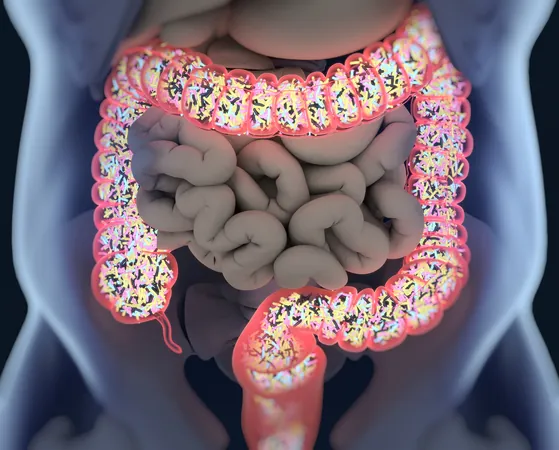
Shocking Discovery: Gut Bacteria Can Share Genes to Form Deadlier Alliances!
2024-10-25
Author: Nur
Introduction
Recent research has unveiled a fascinating yet alarming aspect of gut bacteria: they can share genetic information with competitors, altering their loyalties and consequently creating new collaborative partnerships. This revelation raises critical questions about the safety and efficacy of synthetic, microbe-based therapeutics.
Research Findings
The findings, published in the esteemed journal Science, indicate that careful selection of bacterial strains for biotherapeutics is necessary to prevent potentially adverse interactions that could arise from genetic transfers. Researchers noted that certain large, mobile genetic elements could disable a bacterium's defense mechanisms while equipping its rival with disruptive new abilities—effectively transforming adversaries into allies within the densely populated environment of the gut.
Implications of the Research
Dr. Laurie Comstock, a microbiology professor at the University of Chicago, emphasized the implications of this research: "As we increasingly utilize bacteria as biotherapeutics, we must recognize that these organisms will exchange DNA with others in their environment. Understanding the impact of these mobile genetic elements will enhance our capacity to predict the outcomes of such exchanges."
Focus on Bacteroides Family
The team focused on a bacterium within the Bacteroides family, known for its formidable toxin-pumping arsenal called the type VI secretion system (T6SS), which acts akin to a biological weapon against competitive cells. They discovered that this nanomachine, which injects toxins into neighboring bacteria, comes in various genetic arrangements, each exhibiting different degrees of lethality.
Genetic Architecture Variants
Among these, Genetic Architecture 3 (GA3) is very effective at killing other Bacteroidales species but is unique to Bacteroides fragilis. However, the introduction of Gene Architecture 1 (GA1) from large mobile genetic elements, known as integrative and conjugative elements (ICEs), can lead to the extinction of GA3 T6SS functionality in B. fragilis, demonstrating how genetic manipulation can shift the balance of power within gut biodynamics.
Laboratory Experiments
Remarkably, in laboratory experiments with germ-free mice, transconjugant strains—those that had received GA1 ICE—outperformed their wild-type counterparts armed with GA3 T6SS. Investigations revealed that the presence of GA1 repressed GA3 T6SS production entirely, thereby enabling a more robust presence of GA1 T6SS.
The Cycle of Adaptation
These results illustrate a perilous cycle: Bacteroidales strains harboring the GA1 ICE not only survive but adapt, creating a new strain that avoids targeting its genetic donor while simultaneously bolstering their communal defense against external threats. This could lead to significant alterations in the gut microbial community, making them more resilient against invasive species.
Conclusion
Comstock succinctly summarized the findings: "There exist countless mobile genetic elements within Bacteroidales species in the human gut. This study underscores the unpredictable ways that genetic transfers can modify the recipient organism's traits, disarming hostile functions while equipping them with new capabilities." With the gut microbiome increasingly recognized as a frontier for therapeutic advances, this research highlights urgent concerns regarding genetic interactions and bioengineering. As scientists and clinicians delve deeper into gut health treatments, safeguarding against unintended consequences of these microbial alliances is more crucial than ever!


 Brasil (PT)
Brasil (PT)
 Canada (EN)
Canada (EN)
 Chile (ES)
Chile (ES)
 España (ES)
España (ES)
 France (FR)
France (FR)
 Hong Kong (EN)
Hong Kong (EN)
 Italia (IT)
Italia (IT)
 日本 (JA)
日本 (JA)
 Magyarország (HU)
Magyarország (HU)
 Norge (NO)
Norge (NO)
 Polska (PL)
Polska (PL)
 Schweiz (DE)
Schweiz (DE)
 Singapore (EN)
Singapore (EN)
 Sverige (SV)
Sverige (SV)
 Suomi (FI)
Suomi (FI)
 Türkiye (TR)
Türkiye (TR)